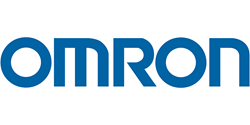Power connectors complete circuits by joining an electrical component to its power source. For consumer electronics, the connector usually refers to the junction where the product “plugs in” to a battery or, more commonly, to a power source in the wall. Some types of electrical connectors carry both power and data, but power connectors have a more specialized purpose: they allow electronic devices to operate.
Power Connector Types Explained
The variety of power connectors on the market reflects their many differences in construction, orientation, and purpose. Some connectors can resist physical damage from water, shock, or vibration; some can only tolerate a limited number of connections and disconnections before they are likely to fail.
We differentiate power connectors by:
- Duration of connection (temporary or permanent)
- Location of conductive interfaces (male or female)
- Type of current (alternating or direct)
- Assembly and removal method
Power Connector Pinouts and Wiring
For a power connector to perform its function correctly, it must have the correct pinout. The pinout is the arrangement of connections each connector can make within a circuit. Each wire attaches to a corresponding contact, or pin, in the connecting component. Because the wires may have different uses and properties, it is essential to the functioning of the connector and the entire circuit that each pin matches to the correct contact.
Manufacturers use several different methods to make these wire connections, such as:
- Soldering
- Piercing or displacing the insulating material around the contacts
- Wire wrapping
Choosing the appropriate connection method depends on the connectors’ terminations. The termination exposes the pins just enough to complete a circuit, but not enough to create a connection that is dangerous, vulnerable to damage by normal usage, or likely to be disconnected by accident.
Keyed and Polarized Connectors
Incorrectly connected pins may risk damaging the electrical components. To prevent a faulty connection, some connectors feature special mechanical adaptations that only allow the connector to connect to the pinout’s correct match, angle, and orientation. These connectors are called “keyed” or “polarized” connectors.
Here are a few essential hardware components of power connectors:
- Jack: a female connector that receives a pin or blade to complete a circuit.
- Blade: a flat, conductive piece of metal that fits inside a blade receptacle to complete a circuit.
- Pin: a male conductive cylinder that fits into a jack as part of a connection.
- Socket: a jack or connecting receptacle that is typically the least movable part of the connector.
- Plug: a termination that may contain multiple jacks, pins, or blades. The plug fits into a socket.

